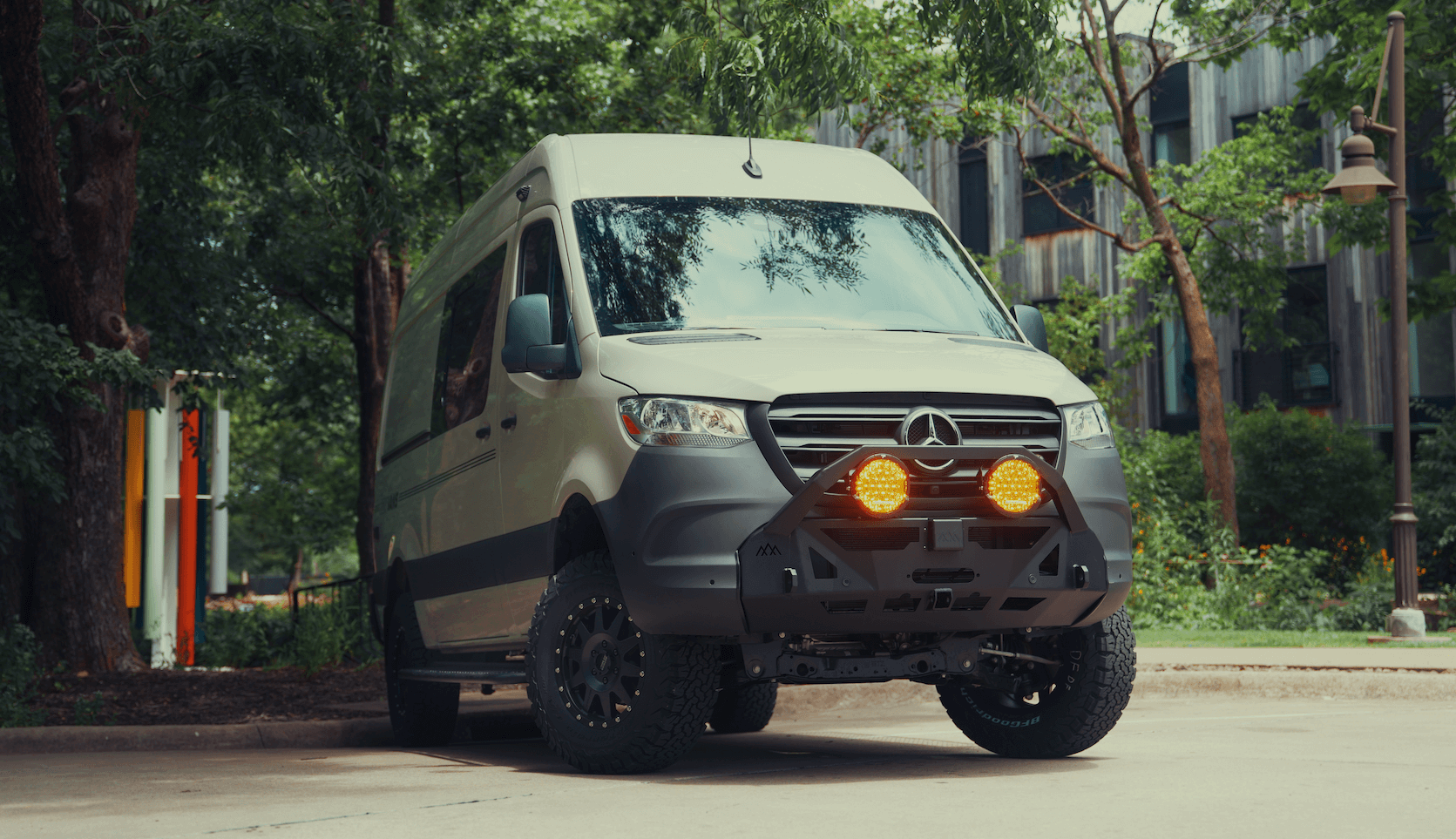Recreational Vans

Suspension sag is the permanent or semi permanent drop in ride height that occurs when springs or related parts lose their original rate or when the vehicle carries more load than the chassis is designed to support. Sag shows up as a nose down or tail down stance, a lean to one side, or an uneven wheel gap. Over time, steel springs fatigue, bushings compress, and shocks lose damping which can accelerate further settling.
Common causes include worn coil springs in the front of vans and trucks, tired leaf springs in the rear, collapsed rubber bushings, and heavy aftermarket gear that shifts weight distribution. Towing, rooftop cargo, large spare wheels, and extended off pavement travel add cumulative stress. In some cases, sag reflects a mismatch between the real payload and the Gross Vehicle Weight Rating, which demands a complete load review before any repair.
Sag matters because it changes suspension geometry and tire contact. Reduced ride height increases squat under acceleration and dive under braking, leading to longer stopping distances and unstable body motion. Headlight aim is thrown off, and alignment angles like camber, caster, and toe drift outside specification, creating irregular tire wear and poor steering feel.
Start with measurements on level ground. Confirm tire pressures are set to the values on the door placard or the tire manufacturer guide when using load range upgrades. Measure from the wheel center to the fender lip on all four corners and record the values. Compare left to right and front to rear. More than a small variation points to spring fatigue or unequal loading inside the cabin and cargo zones.
Next, perform a visual inspection. Look for cracked, flattened, or rusty leaf springs, broken or missing clips, and worn shackles. On coil sprung axles, check for coils that are closer together at the bottom and signs of coil bind. Examine control arm bushings and rear spring eye bushings for cracks or excessive movement. Note any contact marks on the bump stops which suggest frequent bottoming.
Finally, scan for alignment and tire clues. Feathered edges or cupping indicate geometry drift and weak damping. A steering wheel that no longer returns to center after a turn can reflect caster loss due to sag. If you tow, note how the vehicle sits with the trailer coupled. Excessive rear squat is a strong indicator that load support is insufficient for that duty cycle.
Effective suspension sag correction focuses on load, spring rate, and geometry restoration. If your vehicle is within payload and the springs are simply tired, replacement springs matched to the original ride height can solve the issue. For rigs that carry constant added weight like cabinetry, water tanks, roof racks, or recovery gear, consider heavy duty coils or multi leaf packs designed for constant load support.
Helper options can refine support without over stiffening the unloaded ride. Air springs inside or alongside the coils, air bags over leaf springs, or progressive bump stops can add variable support to counter squat under cargo or tongue weight. Timbren style rubber springs, add a leaf kits, and adjustable shackles are tools used when the base spring is close to adequate but needs targeted help.
Do not forget the supporting cast. Fresh shocks are critical because poor damping accelerates spring fatigue and allows extra weight to build momentum. New bushings restore the correct pivot points and reduce unwanted compliance steer. After any height change, perform a full alignment and verify headlight aim. If weight distribution equipment is part of your towing setup, dial it in after the suspension work so the bars or chains are matched to the new stance.
Road test on mixed surfaces to confirm reduced squat, stable braking, and neutral steering. Re measure ride height and record the new baseline. Retorque U bolts, shock mounts, and spring hardware after the first few hundred miles. Recheck alignment if you notice any drift or uneven wear patterns.
Strong chassis fundamentals make adventures smoother and safer. If your van build or truck upfit has grown over time, plan suspension sag correction before adding more gear. The right setup returns control, comfort, and confidence on the highway and in the backcountry.
For owners focused on adventure ready vans, you can explore options and build paths on our Recreational Vans hub: recreational vans. If you are considering a ground up project that matches payload to capability, browse our custom build van page. Shopping for a solid base platform you can finance and then upfit for travel, start with mainstream vans.
You deserve a vehicle that sits level, tracks straight, and carries your load without drama. Our team evaluates ride height, true payload, spring condition, and damping, then recommends the right mix of components for lasting results. We correct sag, align geometry, and validate on the road so your adventures start confident and end relaxed.
Ready to correct sag, regain ride height, and improve handling. Tell us about your van or truck, the gear you carry, and how you travel. Our suspension specialists will diagnose the root cause and build a clear plan that fits your goals. Submit the form to schedule your consultation and get your vehicle sitting right.
Ready to correct sag, regain ride height, and improve handling. Tell us about your van or truck, the gear you carry, and how you travel. Our suspension specialists will diagnose the root cause and build a clear plan that fits your goals. Submit the form to schedule your consultation and get your vehicle sitting right.
ADDRESS:
6159 E Huntsville Rd, Fayetteville, AR 72701
PHONE:
(479) 326-9200
EMAIL:
info@ozkvans.com